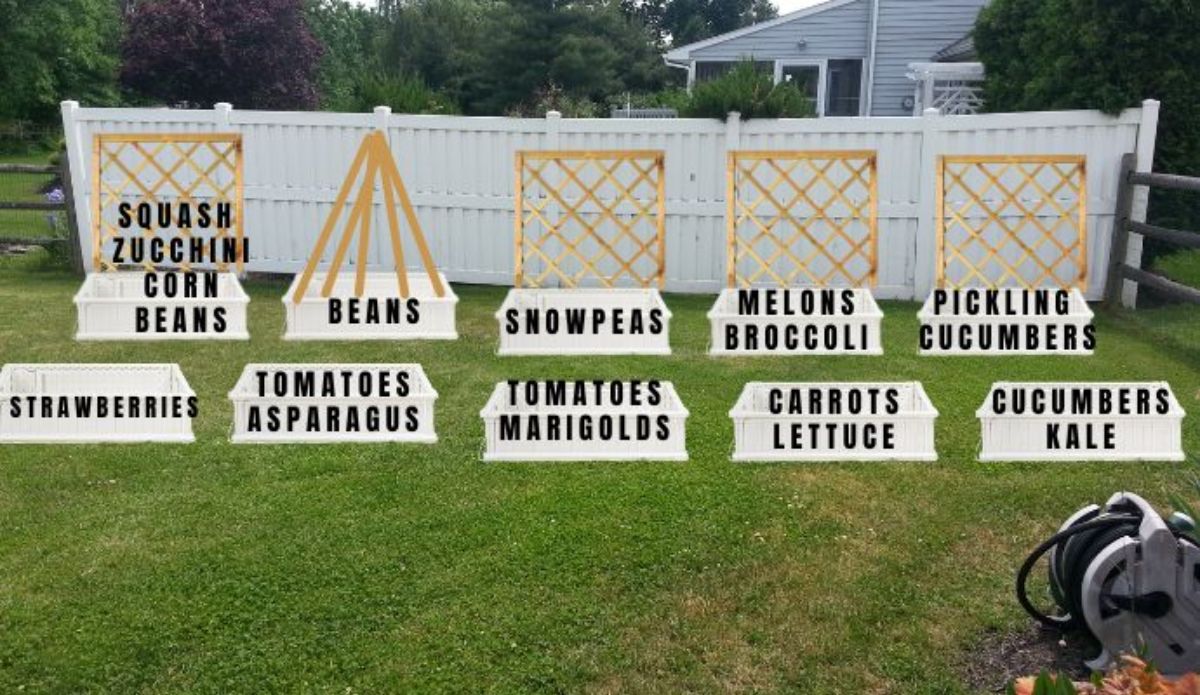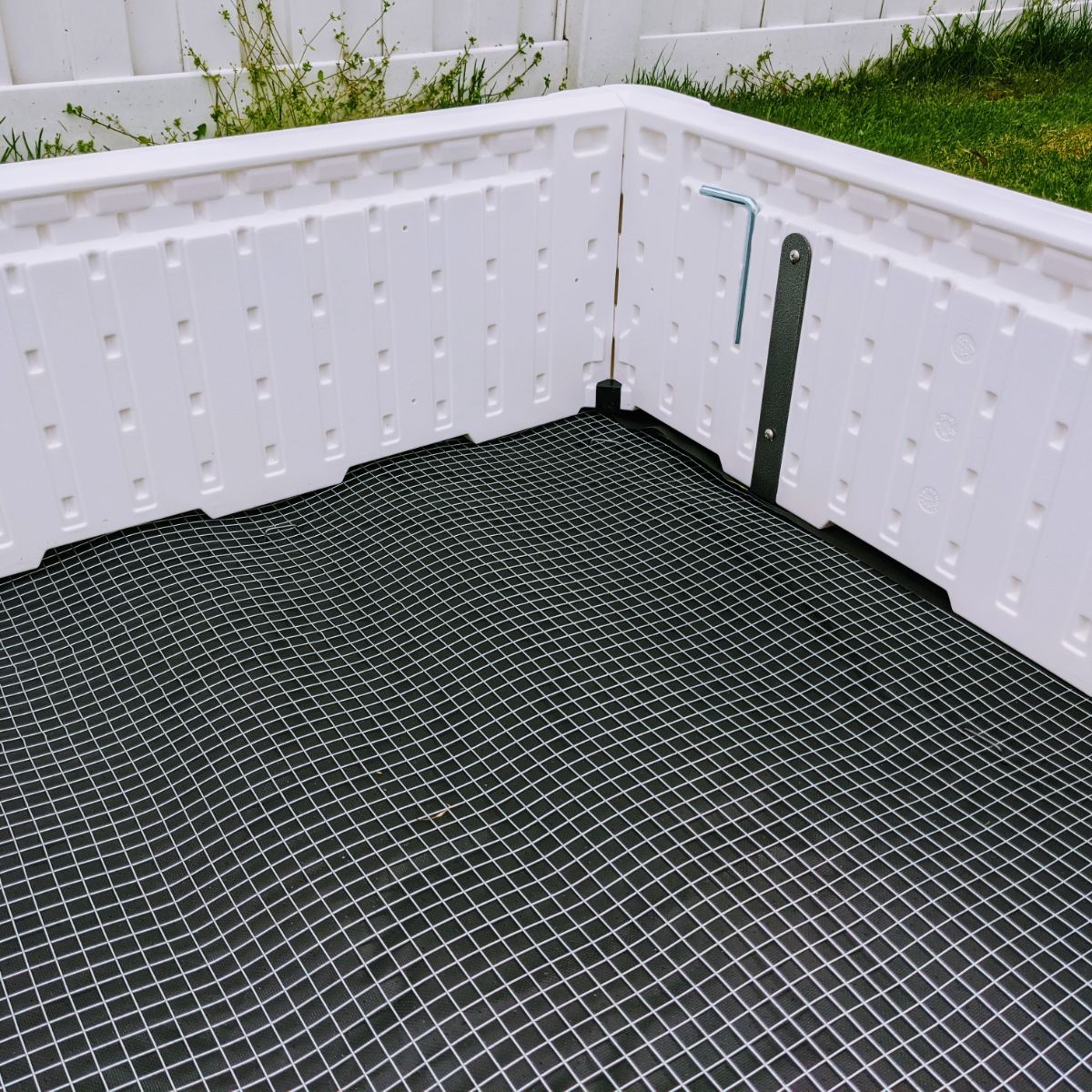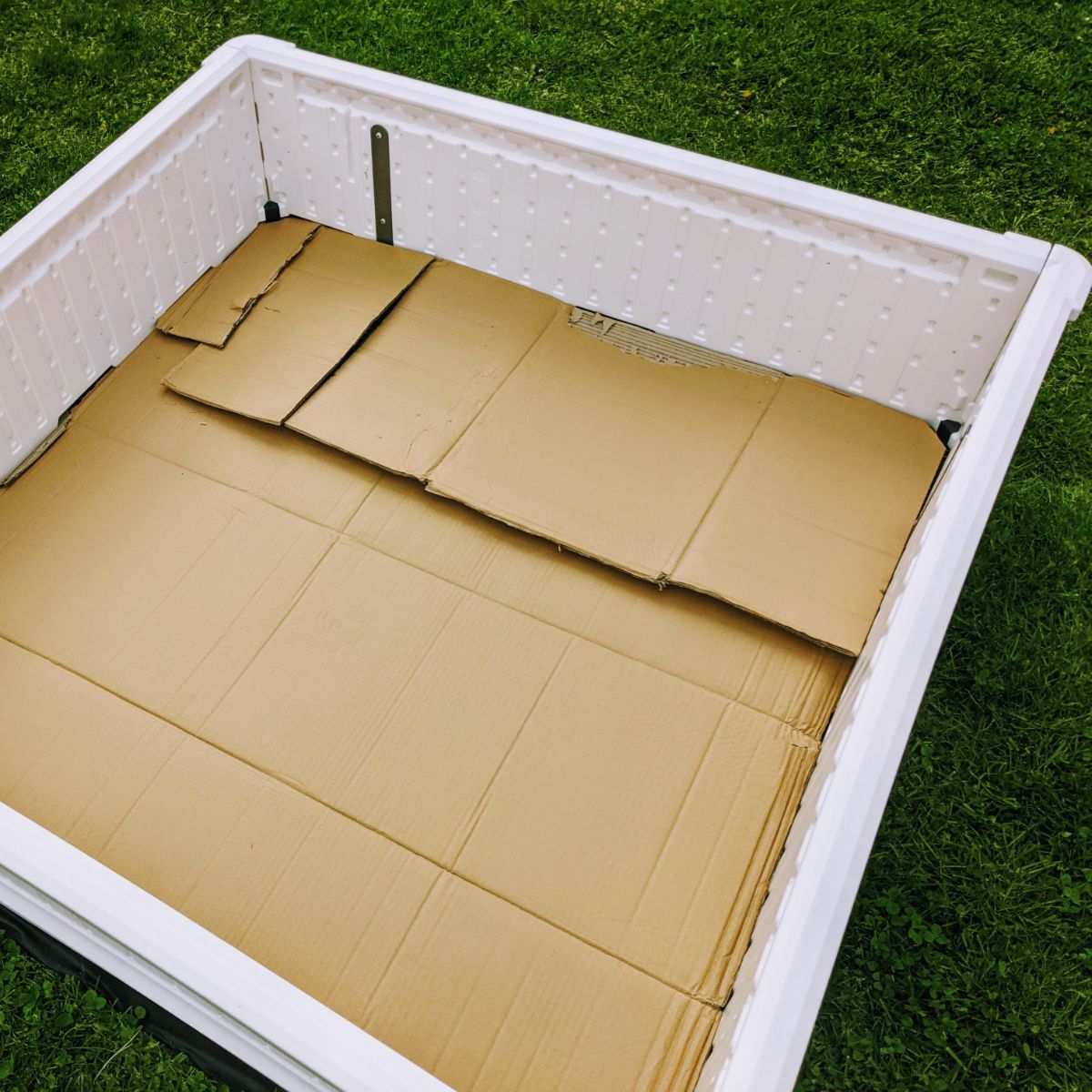Giantex White Raised Garden Beds – HDPE Garden Boxes
It took me a long time to settle on durable, food-safe raised garden beds for our backyard. After much research, I landed on a set of 4 white raised garden beds by Giantex.

My original 4×4 garden beds were made by my husband with love when we were newlyweds. Turns out, wood construction doesn’t last as long as you’d think.
Growing a garden is a lifelong hobby, so I wanted raised beds that would stand the test of time.

I purchased a four-pack of Giantex / Costway 4×4 raised garden beds in 2021. Here’s my review and an overview of how to install HDPE raised garden beds.
Why Costway / Giantex White Raised Garden Beds?
After weeks of research, I decided to buy the white HDPE garden boxes.
Here’s why:
Color
I chose the Giantex white HDPE garden box style to coordinate with a white fence bordering my vegetable garden plot. I liked the way my garden mockup looked!

Forget the fact that my husband vetoed me getting 10 white garden boxes. There’s still time to add a few more in the coming years!

Note: Husband did not approve this garden plan.
Heck, I am planning on buying more property somewhere to expand my gardens into a real orchard and flower beds as far as the eye can see…!
Size
The 48-inch dimensions work well for lots of different veggie garden plants or even square-foot gardening.
I liked this 4×4 size and it is also aesthetically pleasing for a fence-side garden.

Durability
Quality plastic garden boxes certainly last longer than wood ones when properly maintained. After my first boxes bit the dust, I decided plastic raised beds were the way to go.
Thankfully, the construction of the Costway / Giantex garden beds meets my quality and durability needs.
Food-Safe Materials
The biggest reason I chose the HDPE raised beds is because of the food-safe plastic constructions. With two young kids and a health-conscious mind, food safety in the garden was my top priority.

Easy Assembly of 4×4 HDPE White Raised Garden Beds
The white raised garden boxes literally snap together easy peasy! I had my husband do it, but I absolutely could have done it myself.
Truthfully, my 9yo daughter helped more than he did!

In hindsight, I would have done the double-stack and bought twice as many white raised garden beds.
Mainly because of our groundhog problems – one day I will remedy this!

How to Set Up Raised Garden Beds
Follow these simple steps to set up your own garden boxes.
Our website features affiliate links to products that we personally believe in. If you make a purchase from a link on our site, we may earn a small commission at no cost to you. Thank you! This helps our girls chase their garden dreams! Thanks for your support. (View full affiliate disclaimer at the end of the page.)
- Snap together the plastic sides.
- Screw in the metal tether brace.
- Cut a 4-ft by 4-ft section of weed matting and lay it down.
- Cut a 4-ft by 4-ft section of 1/4-inch hardware cloth and lay it on top of the weed matting.
- Push landscaping staples through the hardware cloth and into the ground.
- Cut the cardboard packaging to size. Lay down a full layer of cardboard on top of the hardware cloth.
- Set the white garden bed frame on top of the cardboard and hardware cloth.
- Push the included pins through to secure the white garden box to the ground.
- Fill the raised garden bed with garden soil or soil mix (topsoil, compost, perlite, etc.).
- Move on to the next one. Measure the distance for any other garden beds you will install nearby.
- Repeat steps as needed.
Preparing Raised Garden Beds
Here are a few tips to help you prepare your raised garden beds. (I bought my white garden beds from Amazon, by the way.)

What do I put on the bottom of a raised garden bed?
Place a layer of cardboard on the bottom of a raised garden bed to keep grass and weeds at bay. You can also cut a section of 1/4-inch hardware cloth to help keep out moles and voles.

Cardboard Grass Barrier
Cardboard works well for a no-dig raised garden. Choose thick cardboard boxes, like those you get from packages in the mail.
For best results, place the cardboard so it extends slightly beyond the interior perimeter of the garden box.

This can help to keep grass and weeds from growing up into your garden spaces from the edges.
1/4-Inch Hardware Cloth
Laying down hardware cloth now can help protect your raised garden box from invaders for years to come.
One year with my early garden boxes, we had a problem with rodents in the garden. Voles or moles burrowed underneath the beds from under the ground, creating tunnels amid my green beans.

A hardware cloth barrier proved to be a good solution to keeping them out!
What do you fill a raised garden bed with?
Fill your raised bed with garden soil. You can also mix in compost or leaves. If you wish to make your own soil mix, you can do so with soil, perlite for aeration, and compost like mushroom compost.

How do you fill tall garden boxes?
For a deep raised garden bed, you may wish to add some sticks in the bottom before soil to help fill up the space. This works well for tall raised beds that are 2-feet deep or so.
Most vegetables do not need more than a foot of root space.

White Raised Garden Bed Recommendations
I love my white raised garden beds and would definitely buy them again!

Of course with any gardening project, you have lessons learned. Often to no fault of the equipment!
Here are the few things I would do differently:
- Stack Them – Groundhogs and bunnies can reach plants when the beds are only single stacked.
- Fence Them In – Even stacked, you may still find some garden pests climb. Consider adding a 4×4 raised garden stake fence or exterior garden fences.
- Leave Space Between – Measure the distance from one raised bed to the next to create equal pathways. More than anything, measure for the mower! I asked my hubs to help with measuring and he wouldn’t… so, ya get what you get and don’t get upset. (lol)
Feel free to ask me anything about my white raised garden boxes. You can learn more about the product at Giantex.com!
If you use them too, we’d love to hear about your experience as well. Let’s chat in the comments!

Happy Gardening!














